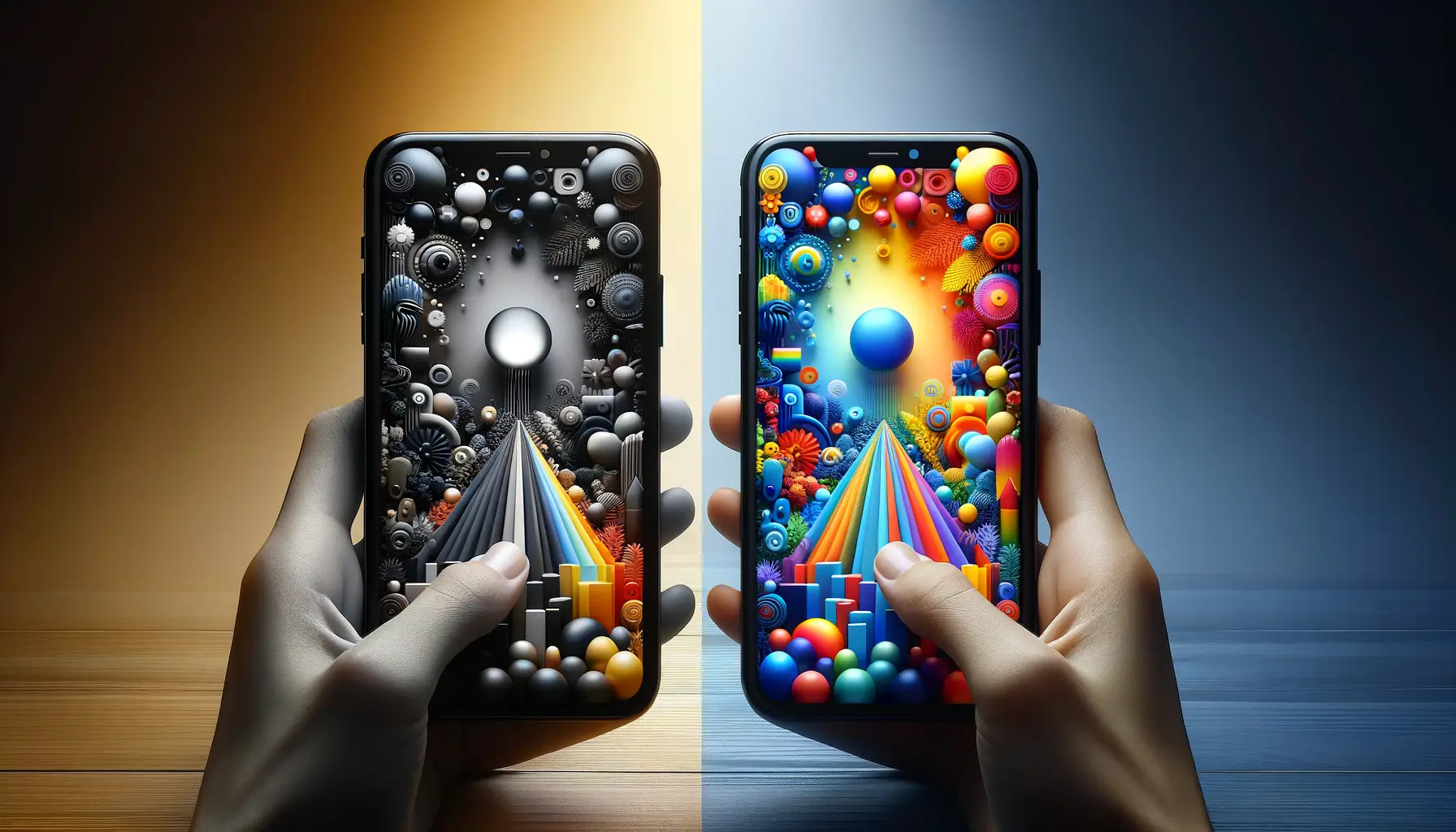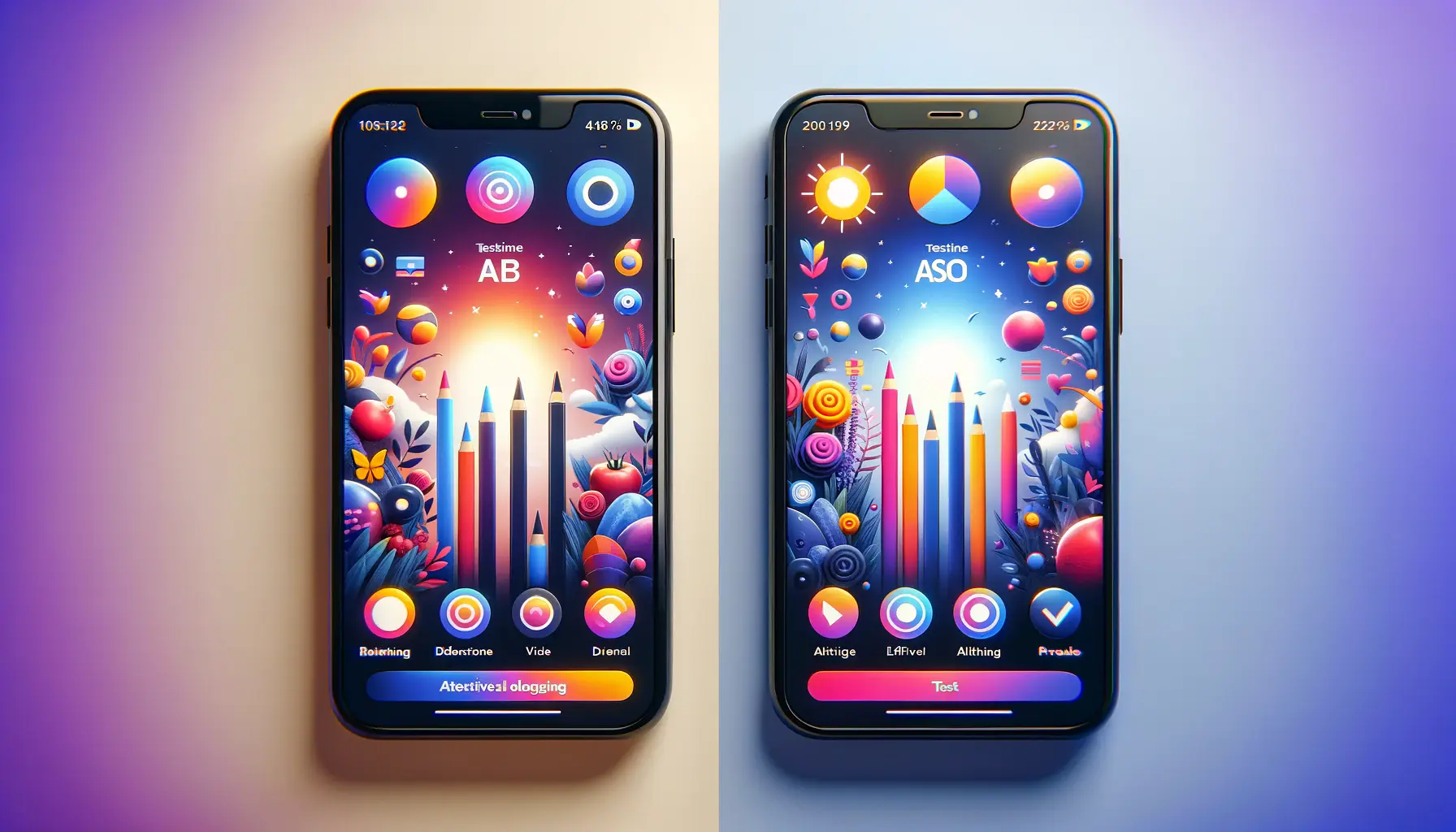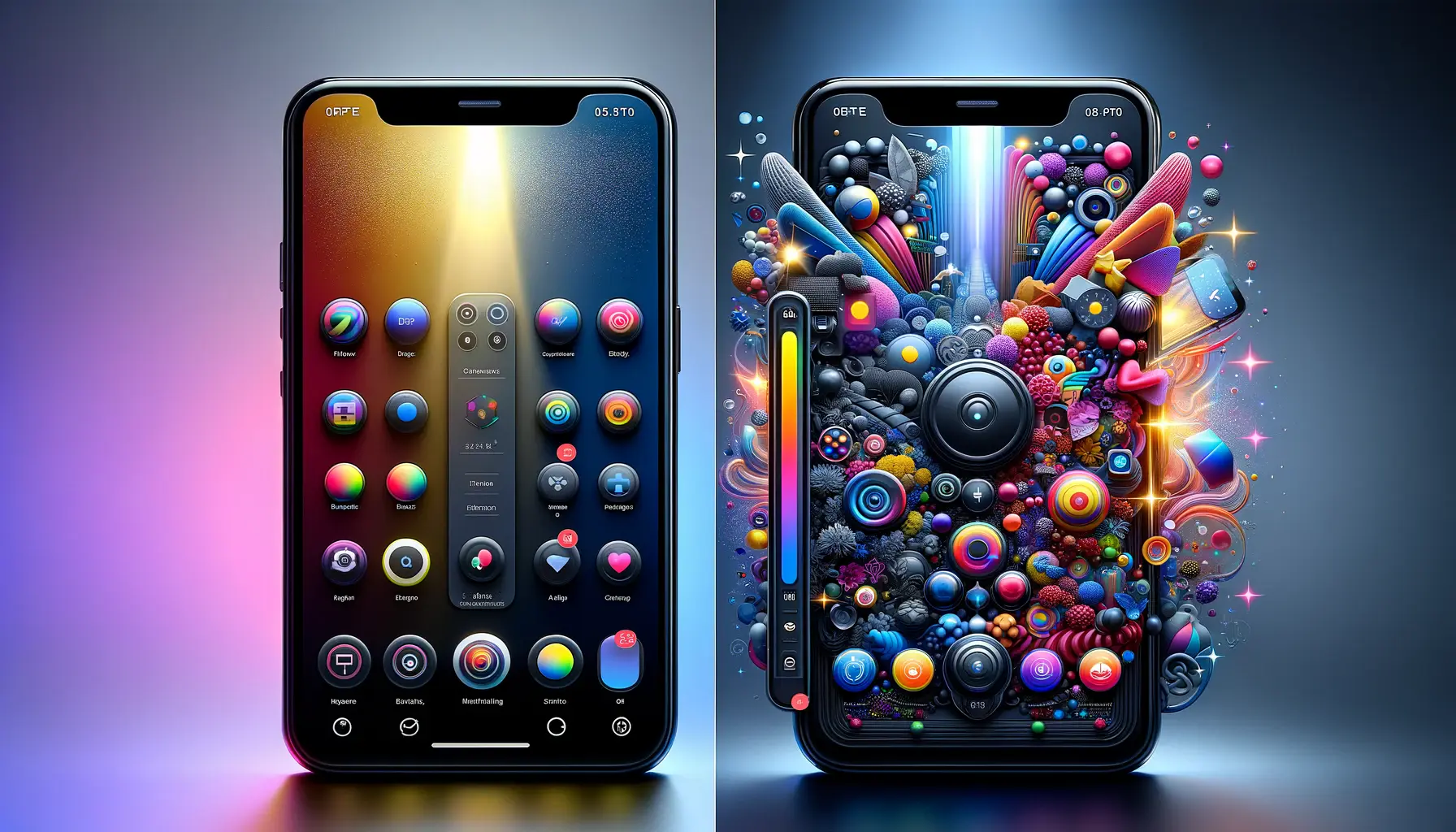In the digital marketplace, where competition is just a click away, App Store Optimization (ASO) stands out as a cornerstone strategy for developers and marketers aiming to capture the attention of potential users.
Among the multitude of ASO elements, screenshots emerge as a critical visual component, directly influencing user engagement and download decisions.
This article delves into the nuances of optimizing ASO screenshots, highlighting their pivotal role in enhancing user engagement and propelling app visibility to new heights.
ASO screenshots do not merely serve as a preview of an app’s features; they act as a powerful marketing tool that can make or break a user’s decision to download.
With users often making split-second decisions, the quality, relevance, and appeal of these screenshots can significantly sway their choices.
This comprehensive exploration will provide actionable insights and strategies to leverage screenshots effectively, ensuring they captivate and communicate the app’s value proposition succinctly.
- Understanding the Impact of ASO Screenshots
- Optimizing Screenshot Design for Maximum Engagement
- Strategies for Showcasing App Functionality
- Leveraging Visual Storytelling in Screenshots
- Enhancing Screenshot Visibility with Keywords
- Adapting Screenshots for Global Markets
- Utilizing Analytics and Optimization Tools for Continuous Improvement
- Maximizing User Engagement Through Strategic ASO Screenshots
- FAQs on Maximizing User Engagement Through ASO Screenshots
Understanding the Impact of ASO Screenshots
The First Impression Counts
The adage “the first impression counts” holds especially true in the app stores.
ASO screenshots are among the first elements that catch a user’s eye when they encounter your app in the search results or browse through categories.
These images are not just static visuals; they narrate the story of your app, showcasing its functionality, aesthetics, and uniqueness.
Crafting screenshots that are both visually appealing and informative sets the stage for a positive first impression, enticing users to explore further.
The design and composition of these screenshots must align with the app’s branding and user expectations to create a cohesive and compelling narrative.
Conveying App Features and Benefits
Screenshots that effectively highlight the app’s key features and benefits can significantly boost user engagement.
By visually representing what the app offers, developers can demystify app functionality and reassure users about the value they’ll gain from downloading.
This visual representation makes complex features more understandable and relatable, bridging the gap between developer intentions and user perceptions.
Moreover, incorporating real-life scenarios or use cases in screenshots can help users visualize how the app fits into their daily lives, further cementing the app’s appeal.
Through strategic selection and arrangement of images, developers can guide potential users through a visual journey, emphasizing the most compelling reasons to engage with the app.
Optimizing Screenshot Design for Maximum Engagement
To maximize user engagement through ASO screenshots, it’s crucial to understand and apply design principles that capture interest and convey your app’s message effectively.
This goes beyond mere aesthetics, delving into the psychology of color usage, layout, and visual storytelling.
Here, we’ll explore key strategies to craft screenshots that not only grab attention but also encourage downloads.
Color Psychology and Branding
The choice of colors in your screenshots can significantly impact user perception and emotional response.
Colors evoke certain feelings and can set the mood for the user experience even before the app is downloaded.
Utilizing your brand’s color scheme consistently across your screenshots reinforces brand recognition and trust.
Moreover, vibrant and contrasting colors can make your screenshots stand out in the crowded app store landscape, drawing users’ eyes to your app among competitors.
Clarity and Simplicity
In the quest to impress potential users, there’s a temptation to overcrowd screenshots with information and visuals.
However, clarity and simplicity should be your guiding principles.
Each screenshot should focus on a single key feature or benefit, making it easy for users to grasp what your app offers at a glance.
A clean, uncluttered design with ample negative space enhances readability and allows your app’s value proposition to shine through.
- Highlighting Key Features: Use bullet points or short captions to clearly articulate the benefits of each feature shown in your screenshots.
- Visual Hierarchy: Arrange elements in a way that guides the viewer’s eye through the screenshot, emphasizing the most important information first.
Utilizing Real-life Context
Contextualizing your app within real-life scenarios can greatly enhance the relatability and perceived value of your app.
By showing your app in use, users can better understand how it would fit into their lives.
For instance, a fitness app might show screenshots of people tracking their workouts or achieving milestones, while a productivity app could showcase scenarios of organizing tasks efficiently.
Such context makes the app’s benefits tangible and encourages users to envision themselves benefiting from its features.
- User Scenarios: Incorporate images that depict common use cases or challenges that your app addresses.
- Emotional Appeal: Select scenarios that elicit positive emotions associated with using your app, such as the joy of achieving a goal or the relief of solving a problem.
Considering the visual journey of your screenshots as a narrative that aligns with your app’s core message can significantly enhance user engagement and conversion rates.
Strategies for Showcasing App Functionality
Illustrating the functionality of your app through ASO screenshots is not just about displaying what the app looks like; it’s about telling a story of how the app improves user experience or solves a problem.
The following strategies focus on effectively showcasing app functionality to entice users to download and explore your app further.
Utilizing Device Mockups: Incorporating device mockups in your screenshots allows users to visualize how the app looks and operates on their own device.
This method bridges the gap between the user’s current experience and the potential experience your app offers.
It’s essential to use the latest device models to ensure relevance and appeal to tech-savvy users.
- Before and After Scenarios: Demonstrate the transformation or solution your app provides by depicting before and after scenarios. This could involve showing the state of disorganization before using a productivity app and the organized outcome after its application.
- Step-by-step Walkthroughs: Break down complex features into a series of screenshots that guide users through the app’s functionalities, showcasing ease of use and intuitiveness.
Incorporating Testimonials and Social Proof
Integrating user testimonials or ratings within your screenshots can significantly enhance credibility and trustworthiness.
Highlighting positive feedback or awards within your screenshots reassures potential users of the app’s quality and reliability.
When users see that others have had a positive experience, they are more likely to consider downloading your app.
- Selective Testimonials: Choose testimonials that speak to the core benefits of your app, and make sure they are concise and impactful.
- Highlight Achievements: If your app has received notable awards or recognition, incorporating these accolades into your screenshots can serve as a powerful endorsement.
Updating Screenshots with New Features
Regular updates to your ASO screenshots reflect ongoing development and improvement of your app, signaling to users that you are committed to providing a quality experience.
When new features are added, updating your screenshots not only informs current users about the latest functionalities but also attracts new users by showcasing your app’s growth and innovation.
- Announce Updates: Use one of your screenshot slots to announce recent updates or new features, making sure to highlight what’s new and improved.
- Seasonal Updates: Tailoring screenshots to reflect seasonal events or holidays can make your app feel more relevant and timely, potentially increasing user interest during peak times.
Keeping your screenshots up-to-date with the latest app features and designs is crucial for maintaining user interest and attracting new downloads.
Leveraging Visual Storytelling in Screenshots
Visual storytelling through ASO screenshots can captivate potential users by weaving a narrative that aligns with their expectations and desires.
This approach goes beyond showcasing app features; it’s about creating a connection with the audience by telling a story that resonates with them.
Effective visual storytelling can transform passive viewers into engaged users, eager to experience the story themselves through your app.
Creating a Cohesive Narrative: Start by defining the story you want to tell through your screenshots.
This narrative should highlight the journey a user will embark upon when using your app.
Consider the challenges they face, the solution your app provides, and the ultimate outcome they can achieve.
By arranging your screenshots to reflect this journey, you create a compelling narrative that potential users can relate to and be inspired by.
- Character Development: If your app features characters or avatars, use these elements to create relatable protagonists for your narrative. Show how these characters overcome challenges using your app, mirroring the user’s potential experience.
- Emotional Arc: Craft your screenshots to reflect an emotional arc, starting with identifying a problem or need, moving through the process of using your app to address it, and ending with a positive resolution or benefit.
Highlighting User Journeys
Focusing on user journeys within your visual storytelling emphasizes the practical application of your app in real-life scenarios.
This method helps potential users visualize how they would use the app in their own lives, making the app’s benefits more tangible and desirable.
Showcase different user journeys that cover a range of features and use cases, providing a broad perspective on what your app has to offer.
- Diverse Scenarios: Include a variety of user scenarios in your screenshots to appeal to a wide audience. This diversity shows the versatility of your app and its relevance to different user needs and lifestyles.
- Progression and Achievements: Demonstrate progression through the app, such as leveling up in a game or achieving goals in a fitness app. This visualization of growth and accomplishment can be highly motivating for potential users.
Using Metaphors and Symbols
Metaphors and symbols can add depth to your visual storytelling, allowing you to convey complex ideas in a simple and intuitive way.
These elements can make your screenshots more memorable and impactful by tapping into shared cultural understandings or emotions.
Be mindful to choose metaphors and symbols that are universally recognized and relevant to your app’s purpose and audience.
- Visual Metaphors: Use visual metaphors to represent app features or benefits, such as using a lock symbol to denote security features in a messaging app.
- Symbolic Color Use: Employ colors symbolically to convey emotions or themes, such as green for growth or red for urgency, enhancing the narrative impact of your screenshots.
Effective visual storytelling in ASO screenshots not only showcases what your app does but also why it matters, creating a deeper connection with potential users.
Enhancing Screenshot Visibility with Keywords
Integrating keywords into your ASO strategy, particularly within screenshot captions or descriptive text, can significantly improve your app’s visibility and searchability in the app stores.
While screenshots themselves are inherently visual, the accompanying text fields offer a valuable opportunity to include relevant keywords that potential users might use to search for apps like yours.
This part of your ASO strategy bridges the gap between visual appeal and search engine optimization, ensuring that your app not only looks appealing but also appears in search results more frequently.
Research and Select Target Keywords: Begin by conducting thorough keyword research to identify the terms and phrases most relevant to your app and its features.
Focus on keywords with high search volume but moderate competition, balancing visibility with the likelihood of ranking high in search results.
Utilize tools designed for ASO keyword research to compile a list of optimal keywords for your app.
- Integrating Keywords Naturally: Incorporate your selected keywords into the screenshot captions or descriptive text in a way that feels natural and informative. The text should add value to the screenshots, clarifying features or benefits, while also enhancing your app’s searchability.
- Updating Keywords Regularly: App store trends and user search behaviors evolve over time. Regularly review and update your keywords to reflect current trends and ensure ongoing relevance and visibility.
Optimizing Text for Clarity and Impact
The textual content that accompanies your screenshots must be clear, concise, and impactful.
It should quickly convey the app’s value proposition and how it addresses users’ needs or desires.
This optimization is not just about keyword inclusion; it’s about making sure that every word counts towards engaging the viewer and encouraging them to learn more about your app.
- Clear Value Proposition: Use the text to clearly state what makes your app unique and why users should care. Highlight the main benefits or features that differentiate your app from competitors.
- Call to Action: Include a strong call to action (CTA) encouraging users to download or explore the app further. A compelling CTA can significantly increase conversion rates from views to downloads.
Measuring the Impact of Keyword Optimization
Tracking and analyzing the performance of your keyword-optimized screenshots is crucial to understanding their effectiveness and making informed adjustments.
Use app store analytics and ASO tools to monitor how changes in your screenshot text impact your app’s visibility, search rankings, and download rates.
This data-driven approach allows you to refine your strategy over time, continuously improving your app’s performance in the app stores.
- Performance Metrics: Keep an eye on key performance indicators (KPIs) such as impression-to-download conversion rates, search rankings for target keywords, and overall app visibility in the app stores.
- A/B Testing: Conduct A/B tests with different versions of your screenshots, including variations in keyword usage and text content, to identify what resonates best with your target audience and drives the most downloads.
Leveraging keywords in your ASO screenshot strategy enhances not only the visual appeal but also the searchability and visibility of your app, creating a synergy that drives user engagement and downloads.
Adapting Screenshots for Global Markets
Expanding your app’s reach into global markets requires more than just translating text; it involves culturally adapting your ASO screenshots to resonate with diverse audiences.
This localization process ensures that your app is not only understandable but also appealing and relevant to users in different geographical and cultural contexts.
Here, we explore strategies for effectively adapting your ASO screenshots for a global audience, maximizing your app’s appeal across borders.
Cultural Sensitivity and Localization: Begin by researching the cultural norms and preferences of your target markets.
Cultural sensitivity is key to ensuring that your screenshots are appropriate and appealing to users in different regions.
Localization goes beyond translation, encompassing visual elements, color schemes, and social norms that might influence a user’s perception and acceptance of your app.
- Visual and Textual Adaptation: Adjust the imagery, colors, and text in your screenshots to align with the cultural expectations and aesthetic preferences of each target market. This might include changing the app interface language displayed in screenshots or modifying visual elements to reflect local tastes.
- Local User Scenarios: Showcase use cases or scenarios within your screenshots that are relevant and relatable to users in each region. Highlighting how your app fits into the local lifestyle or addresses specific regional needs can significantly enhance its appeal.
Testing and Feedback
To ensure that your localized screenshots effectively resonate with target audiences, it’s essential to test them and gather feedback from users in those regions.
This iterative process allows you to refine your screenshots based on real user responses, optimizing their impact and effectiveness in each market.
- User Testing: Conduct user testing sessions with participants from your target markets to gauge their reactions to your localized screenshots. Pay attention to both their verbal feedback and non-verbal cues.
- A/B Testing: Utilize A/B testing tools to compare different versions of your localized screenshots, measuring which variations perform better in terms of user engagement and conversion rates.
Leveraging Local Insights for Optimization
Incorporating local insights and trends into your ASO screenshots can further enhance their relevance and appeal.
Stay informed about current events, popular culture, and emerging trends in each target market to ensure that your screenshots remain up-to-date and resonate with users’ interests and preferences.
- Local Trends: Adapt your screenshots to reflect local trends or seasonal events, making your app more relevant and timely for users in each region.
- Competitor Analysis: Analyze the ASO strategies of successful competitors in each market to identify best practices and innovative approaches to screenshot localization.
Assuming that a one-size-fits-all approach will work in global markets is a common mistake. Tailoring your ASO screenshots to meet the specific cultural and linguistic needs of each target market is crucial for global success.
Utilizing Analytics and Optimization Tools for Continuous Improvement
The realm of App Store Optimization (ASO) is dynamic, with user preferences, market trends, and app store algorithms constantly evolving.
To keep pace and ensure your ASO screenshots remain effective, leveraging analytics and optimization tools is essential.
These tools offer insights into how your screenshots are performing, enabling continuous refinement and optimization based on data-driven decisions.
Tracking and Analyzing Screenshot Performance: Utilize app store analytics and third-party ASO tools to monitor the performance of your screenshots.
Key metrics to focus on include conversion rates (the percentage of users who download your app after viewing your screenshots), click-through rates (CTR) for screenshots in search results, and user engagement metrics within the app store listings.
By analyzing these metrics, you can identify which screenshots are most effective at driving downloads and engagement, and which may need to be revised or replaced.
- Iterative Testing: Adopt an iterative approach to testing different screenshot variations. A/B testing can be particularly valuable here, allowing you to compare different designs, layouts, and messaging to see what resonates most with your target audience.
- User Feedback: Pay attention to user reviews and feedback in the app store, as they can provide qualitative insights into how users perceive your app based on the screenshots. This feedback can highlight areas for improvement or suggest new features and benefits to highlight in your screenshots.
Leveraging ASO Optimization Tools
There are numerous ASO tools available that can assist in optimizing your screenshots.
These tools can provide keyword analysis, competitor benchmarking, and visual optimization suggestions, among other features.
By leveraging these tools, you can gain a competitive edge, ensuring that your screenshots are not only visually appealing but also aligned with best practices for ASO.
- Keyword Optimization: Use keyword optimization tools to ensure that the text accompanying your screenshots is optimized for relevant, high-search-volume keywords. This can improve the visibility of your screenshots in app store search results.
- Visual Analysis: Some tools offer visual analysis features, assessing the color schemes, layout, and overall visual appeal of your screenshots compared to top-performing apps in your category.
Continuous Monitoring and Adaptation
ASO is not a set-it-and-forget-it endeavor; it requires ongoing monitoring and adaptation to remain effective.
Keep an eye on app store updates and changes in user behavior to ensure your screenshots continue to meet the evolving standards and preferences.
Regular updates, based on the latest analytics and user feedback, will help maintain your app’s competitiveness in the app store.
- Market Trends: Stay informed about broader market trends and user preferences, adapting your screenshots to reflect these trends and ensure they remain relevant and appealing.
- Algorithm Updates: Be aware of updates to app store algorithms, adjusting your ASO strategy accordingly to maintain or improve your app’s visibility and user engagement.
Embracing a culture of continuous improvement, supported by analytics and optimization tools, is key to sustaining the effectiveness of your ASO screenshots and achieving long-term success in the app stores.
Maximizing User Engagement Through Strategic ASO Screenshots
In the competitive landscape of the app stores, ASO screenshots serve as a pivotal tool in capturing the attention of potential users and converting their interest into downloads.
The journey of optimizing these visual elements is intricate, requiring a deep understanding of user psychology, market trends, and the technical nuances of app store algorithms.
Through the strategic deployment of screenshots, developers can effectively narrate the value and functionality of their apps, encouraging users to embark on a digital journey that begins with a single tap.
The Art and Science of Screenshot Optimization
Maximizing user engagement through ASO screenshots is both an art and a science.
It demands a balance between aesthetic appeal and the strategic incorporation of keywords, ensuring that screenshots not only catch the eye but also rank well in search results.
The visual storytelling aspect of screenshots can significantly influence a user’s decision-making process, making it imperative for developers to carefully curate each image to convey the app’s core features and benefits compellingly.
Key Strategies for Effective ASO Screenshots
- Utilize color psychology and branding to create a visually cohesive and appealing set of screenshots.
- Highlight key features and benefits with clarity, utilizing captions and bullet points for easy comprehension.
- Showcase real-life use cases to demonstrate the app’s value in everyday scenarios, making it more relatable to potential users.
- Incorporate user testimonials and social proof to build trust and credibility among new users.
- Regularly update screenshots to reflect new features, seasonal themes, or user feedback, keeping the app’s presentation fresh and relevant.
Adapting to Global Markets and Continuous Optimization
Expanding the reach of an app requires the localization of ASO screenshots, tailoring them to meet the cultural and linguistic nuances of target markets.
This global perspective ensures that apps are not just seen but embraced by a diverse user base.
Moreover, the use of analytics and optimization tools for continuous improvement underscores the dynamic nature of ASO.
By staying attuned to user feedback, market trends, and app store developments, developers can maintain the effectiveness of their screenshots, adapting strategies to meet the evolving landscape of user engagement.
In conclusion, maximizing user engagement through ASO screenshots is a crucial endeavor that demands creativity, analytical prowess, and a commitment to ongoing optimization.
By crafting screenshots that resonate with potential users, developers can significantly enhance the visibility and attractiveness of their apps.
In doing so, they not only achieve higher download rates but also foster a deeper connection with their audience, laying the foundation for sustained app success in the bustling app store ecosystem.
Boost your mobile app's success with our guaranteed App Store Optimization (ASO) service. Leave it to the experts!
FAQs on Maximizing User Engagement Through ASO Screenshots
Unveiling the strategies and insights to elevate your app’s presence and attract users effectively through optimized screenshots.
A good ASO screenshot clearly demonstrates the app’s core features, is visually appealing, and aligns with the app’s brand identity.
Update your ASO screenshots regularly, especially when introducing new features, to keep your app’s presentation fresh and relevant.
Yes, engaging and informative ASO screenshots can improve app store rankings by increasing download rates and user engagement.
Yes, tailoring screenshots to fit the design and user expectations of each platform (iOS, Android) can enhance user engagement.
Color can significantly impact user perception, with strategic use enhancing clarity, drawing attention, and conveying emotions.
Incorporate concise, informative text that highlights key features and benefits, using keywords to improve searchability.
Real-life images in screenshots can make the app more relatable, demonstrating practical use cases to potential users.
Localize by adapting visual elements, text, and cultural references in your screenshots to resonate with diverse audiences.










